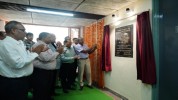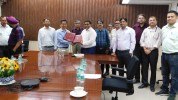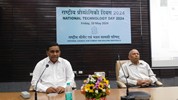


News & Events

News & Events
- Advertisement No. C/08/2024(02) - Written Test/Personal Discussion (11th Nov 2024) - POSTPONED
- NCB IC Event: Innovate Youth: Building Tomorrow's Entrepreneurs.
- PG Diploma Admission 2024-25 - Written Test & Interview Reg.-Round II
- List of selected candidates for admission to One Year Post Graduate Diploma in Cement Technology at NCB Ballabgarh for Session 2024-25
Consultancy services for getting NABL Accreditation as per ISO/IEC 17025:2017
Notice on Public Grievance
NCB – CCE EVENTS / Forthcoming Training Programmes
Ongoing Proficiency Testing Schemes
ONLINE Payment Facility
Steps for Online Payment through SB Collect
Last date for Submission of Technical Papers in 18th NCB International Conference & Exhibition extended to 31st August 2024
Last date for applying for National Awards in Indian Cement Industry 2022-24 is extended to 31st August 2024
Post Graduate Diploma in Cement Technology 2024-25 (Date Extended upto 15 July 2024)
NCB requires Lab Analysts, Junior Assistants, Senior Assistant and Designer on Direct Recruitment Basis
New Facilities added in Calibration Services
18th NCB International Conference - Call for Papers
Corrigendum - Compassionate Appointment in NCB for Group “C” & “D
Compassionate Appointment in NCB for Group “C” & “D
18th NCB International Conference, 27-29 Nov 2024 (Bulletin 1)
NCCBM to host 17th International Congress on Chemistry of Cement (ICCC) in 2027 in New Delhi
Investigations on kiln shell corrosion
Corrosion of kiln shell is influenced by a number of factors such as composition of the metallic shell and its environment, temperature of the shell, cleanliness and roughness of the shell surface and its contact with other materials, oxidizing/reducing conditions, improper combustion of coal, etc. The corrosion phenomenon takes place mainly due to the presence of sulphates and chlorides of alkalis and calcium at high temperature in the cement kiln. The role of refractories in cement kiln is primarily to protect the steel shell from the direct attack of deleterious gases and clinker melt and to reduce the shell temperature so that steel of the shell does not loose its properties. The reduction in shell temperature also leads to energy conservation besides providing workable conditions near kiln shell.










